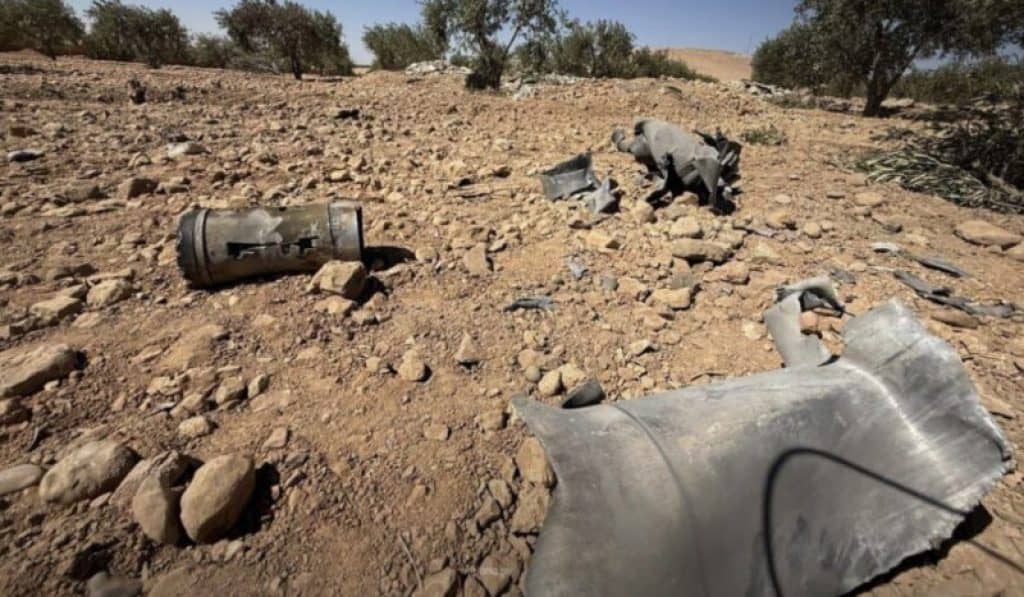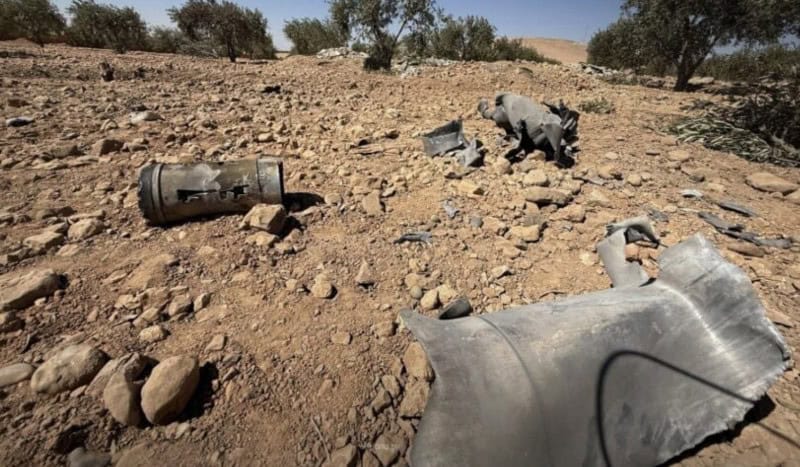 Shrapnel found on September 25 in the wake of clashes between the Syrian Democratic Forces and Syrian transitional government security forces near Aleppo. (SANA)
Shrapnel found on September 25 in the wake of clashes between the Syrian Democratic Forces and Syrian transitional government security forces near Aleppo. (SANA)
On September 24, Syrian interim President Ahmed al Sharaa addressed the UN General Assembly and spoke about the country’s attempt to rebuild itself after years of conflict. “Syria has transformed from a country that exported crises into a historic opportunity to establish stability, peace, and prosperity for Syria and for the entire region,” Sharaa said.
The Syrian leader’s speech comes amid increasing pressure to integrate eastern Syria, which is controlled by the largely Kurdish-run Autonomous Administration of North and East Syria (AANES) and the US-backed Syrian Democratic Forces, its military component, into the Syrian transitional government. It also comes as the SDF continues to clash with transitional government forces and as the Islamic State (IS) threatens both entities. The US is increasingly involved in mediating between the central government and authorities in eastern Syria, having appointed a special envoy to Damascus in the wake of US Central Command chief Admiral Brad Cooper’s visit to Damascus on September 12.
Nevertheless, clashes between the SDF and Syrian transitional government security forces continue weekly. On September 25, the state-run Syrian Arab News Agency (SANA) reported that two Syrian transitional government security personnel were killed by the SDF in clashes near Aleppo. Subsequently, Iraq’s Shafaq News noted that “an SDF military source” said “that government forces launched two simultaneous drone attacks targeting SDF positions, injuring three fighters amid intermittent confrontations in the area.”
On September 20, the UK-based Syrian Observatory for Human Rights (SOHR) reported that “armed clashes erupted with drones and heavy weapons between members of SDF and [members] of the Syrian army, after members of the latter attacked military positions of ‘SDF’ in Deir Hafer area in Aleppo countryside with drones. However, no casualties were reported.”
The clashes between Damascus and the SDF are the latest round in several cycles of low-level violence that have occurred in recent months. These conflicts persist as the SDF also continues confronting the Islamic State, further contributing to possible instability. For example, on September 25, reports in eastern Syria indicated that five SDF members were killed in an Islamic State attack.
In Washington, UN Special Envoy for Syria Tom Barrack said on September 25 that Syria would move toward “a centralized government that doesn’t become a federation” by the end of the year. In March, SDF leader General Mazloum Abdi met with Sharaa to agree on a road map to integrate eastern Syria with Damascus. Barrack’s comments appear to be in contrast with calls by the Autonomous Administration of North and East Syria to have a decentralized government.
However, Barrack also discussed the possibility of some decentralization in an interview with the Kurdish Rudaw Media Network. “How do you design a centralized government that doesn’t become a federation that gives all of those factions […] an opportunity?” Barrack stated. A Rudaw analyst argued that in the wake of Sharaa’s UN speech, where the Syrian leader was well received, he could pressure eastern Syria’s Kurds to integrate further into the new government.
The Syrian North Press Agency noted on September 26 that Yasser al Suleiman, the spokesperson for the AANES’s negotiating delegation with Damascus, said on September 26 that “there are significant pressures on all Syrian parties to reach understandings that lead to solutions.” The AANES is waiting for a date from Damascus to “begin discussions on these files through their committees and the corresponding ones on the other side, whether civilian, military, security, or even constitutional, if possible.” Suleiman added, “We still hope that dialogue will lead to tangible, positive results if it begins soon, despite all challenges and difficulties. Syrians have always been and remain worthy of national solutions that unite rather than divide.”
While Kurdish media outlets continue to closely cover developments with the US and Damascus, Syrian state and national media outlets in Damascus appear to have downplayed or ignored tensions and issues with eastern Syria over the last week. For instance, Al Ikhbariah focused its coverage on the electric grid in Deir Ezzor, which neighbors areas controlled by the SDF. In addition, SANA reported on September 18 that Syria’s minister of culture visited Afrin, a largely Kurdish area of northwestern Syria, and brought a “message of unity and solidarity for the people of Afrin—both Arabs and Kurds—highlighting that a unified national culture is the foundation for Syria’s future.”

